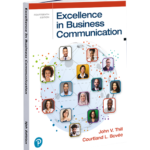 As a college instructor, you will inevitably encounter various types of problem students. These students can disrupt the learning environment, create challenges for you and other students, and hinder the overall success of your course. In this article, we will discuss ten common types of problem students and provide suggestions on how to best handle each situation.
As a college instructor, you will inevitably encounter various types of problem students. These students can disrupt the learning environment, create challenges for you and other students, and hinder the overall success of your course. In this article, we will discuss ten common types of problem students and provide suggestions on how to best handle each situation.
1. The Disruptive Student
Disruptive students may talk excessively, interrupt others, or make inappropriate comments. To address this behavior, privately speak with the student and clearly explain how their actions negatively impact the class. Refer to the course policies and the college's code of conduct. If the behavior persists, consider reporting the issue to your department head.
2. The Aggressive Student
Aggressive students exhibit hostile, intimidating, or threatening behavior. If you encounter such a student, prioritize your safety and the safety of other students. If a situation escalates, do not hesitate to call campus security or the police. Report any incidents to your department head and campus security, and document the details for future reference.
3. The Unmotivated Student
Unmotivated students show little interest in the course, fail to complete assignments, or frequently miss classes. Reach out to the student privately to discuss their performance and any challenges they may be facing. Offer support and resources, such as tutoring or study groups. If the student's lack of motivation persists, follow your institution's policies regarding academic performance.
4. The Entitled Student
Entitled students may demand special treatment, argue about grades, or disregard course policies. Be firm and consistent in enforcing course policies and grading standards. Refer to the syllabus and explain the reasoning behind your decisions. If the student becomes confrontational, involve your department head or the appropriate college authority.
5. The Overly Dependent Student
Overly dependent students may constantly seek assistance, email excessively, or monopolize your time. Set clear boundaries and expectations for communication and assistance. Encourage the student to develop independent problem-solving skills and direct them to additional resources, such as tutoring services or study groups.
6. The Attention-Seeking Student
Attention-seeking students may attempt to dominate discussions, ask off-topic questions, or engage in attention-grabbing behavior. Redirect the student's energy by giving them specific tasks or roles in class discussions. Privately discuss their behavior and its impact on the class dynamic. Encourage them to contribute in more constructive ways.
7. The Unprepared Student
Unprepared students attend class without required materials, haven't completed readings, or are not ready to participate. Emphasize the importance of preparation and participation in your course policies. Consider implementing low-stakes quizzes or assignments to encourage students to stay on top of course material.
8. The Cheating Student
Students who engage in academic dishonesty, such as plagiarism or cheating on exams, undermine the integrity of your course. Clearly communicate your expectations regarding academic integrity and the consequences of cheating. If you suspect cheating, follow your institution's procedures for reporting and addressing academic misconduct.
9. The Student with Mental Health Issues
Students with mental health issues may exhibit erratic behavior, emotional outbursts, or difficulty coping with stress. Approach these situations with empathy and understanding. Refer the student to campus mental health resources and counseling services. If their behavior becomes disruptive or concerning, consult with the college's counseling center for guidance.
10. The Student with Personal Issues
Students dealing with personal problems may struggle to focus on their studies or interact appropriately in class. Be supportive and understanding, but maintain appropriate boundaries. Encourage the student to seek help from campus resources, such as counseling services or the Dean of Students office.
In all cases, document any incidents or concerns, including dates, times, and details of the situation. Seek support from your department, colleagues, or college administration when needed. Remember, your primary goal is to create a safe, inclusive, and productive learning environment for all students.
By understanding the various types of problem students and implementing these strategies, you can effectively manage challenging situations and promote a positive classroom experience. Remain patient, professional, and proactive in your approach, and don't hesitate to seek assistance when necessary.
Dealing with Problem Students in the College Classroom: A Guide for Instructors
As a college instructor, you will inevitably encounter various types of problem students. In this article, we will discuss ten common types of problem students and provide suggestions on how to best handle each situation.
1. The Disruptive Student
Disruptive students may talk excessively, interrupt others, or make inappropriate comments. To address this behavior, privately speak with the student and clearly explain how their actions negatively impact the class. Refer to the course policies and the college's code of conduct. If the behavior persists, consider reporting the issue to your department head.
2. The Aggressive Student
Aggressive students exhibit hostile, intimidating, or threatening behavior. If you encounter such a student, prioritize your safety and the safety of other students. If a situation escalates, do not hesitate to call campus security or the police. Report any incidents to your department head and campus security, and document the details for future reference.
3. The Unmotivated Student
Unmotivated students show little interest in the course, fail to complete assignments, or frequently miss classes. Reach out to the student privately to discuss their performance and any challenges they may be facing. Offer support and resources, such as tutoring or study groups. If the student's lack of motivation persists, follow your institution's policies regarding academic performance.
4. The Entitled Student
Entitled students may demand special treatment, argue about grades, or disregard course policies. Be firm and consistent in enforcing course policies and grading standards. Refer to the syllabus and explain the reasoning behind your decisions. If the student becomes confrontational, involve your department head or the appropriate college authority.
5. The Overly Dependent Student
Overly dependent students may constantly seek assistance, email excessively, or monopolize your time. Set clear boundaries and expectations for communication and assistance. Encourage the student to develop independent problem-solving skills and direct them to additional resources, such as tutoring services or study groups.
6. The Attention-Seeking Student
Attention-seeking students may attempt to dominate discussions, ask off-topic questions, or engage in attention-grabbing behavior. Redirect the student's energy by giving them specific tasks or roles in class discussions. Privately discuss their behavior and its impact on the class dynamic. Encourage them to contribute in more constructive ways.
7. The Unprepared Student
Unprepared students attend class without required materials, haven't completed readings, or are not ready to participate. Emphasize the importance of preparation and participation in your course policies. Consider implementing low-stakes quizzes or assignments to encourage students to stay on top of course material.
8. The Cheating Student
Students who engage in academic dishonesty, such as plagiarism or cheating on exams, undermine the integrity of your course. Clearly communicate your expectations regarding academic integrity and the consequences of cheating. If you suspect cheating, follow your institution's procedures for reporting and addressing academic misconduct.
9. The Student with Mental Health Issues
Students with mental health issues may exhibit erratic behavior, emotional outbursts, or difficulty coping with stress. Approach these situations with empathy and understanding. Refer the student to campus mental health resources and counseling services. If their behavior becomes disruptive or concerning, consult with the college's counseling center for guidance.
10. The Student with Personal Issues
Students dealing with personal problems may struggle to focus on their studies or interact appropriately in class. Be supportive and understanding, but maintain appropriate boundaries. Encourage the student to seek help from campus resources, such as counseling services or the Dean of Students office.
In all cases, document any incidents or concerns, including dates, times, and details of the situation. Seek support from your department, colleagues, or college administration when needed. Remember, your primary goal is to create a safe, inclusive, and productive learning environment for all students.
By understanding the various types of problem students and implementing these strategies, you can effectively manage challenging situations and promote a positive classroom experience. Remain patient, professional, and proactive in your approach, and don't hesitate to seek assistance when necessary.
 Excellence in Business Communication provides you with the tools to tackle classroom challenges, particularly those related to unmotivated students and maintaining the attention of others. The book teaches you how to craft engaging and compelling messages that can inspire and motivate students who lack interest or enthusiasm. By applying the principles of effective communication, you can create a dynamic and interactive classroom environment that captivates students' attention and encourages active participation. Moreover, the book offers strategies for providing constructive feedback and fostering a growth mindset, which can help unmotivated students develop a renewed sense of purpose and commitment to their studies. With the skills gained from Excellence in Business Communication, you'll be well-equipped to keep your students engaged, motivated, and focused on their educational goals.
Excellence in Business Communication provides you with the tools to tackle classroom challenges, particularly those related to unmotivated students and maintaining the attention of others. The book teaches you how to craft engaging and compelling messages that can inspire and motivate students who lack interest or enthusiasm. By applying the principles of effective communication, you can create a dynamic and interactive classroom environment that captivates students' attention and encourages active participation. Moreover, the book offers strategies for providing constructive feedback and fostering a growth mindset, which can help unmotivated students develop a renewed sense of purpose and commitment to their studies. With the skills gained from Excellence in Business Communication, you'll be well-equipped to keep your students engaged, motivated, and focused on their educational goals.